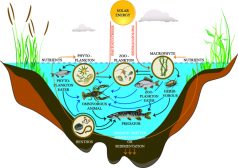Definition
noun, plural: platyrrhines
Any of the small to mid-sized primates belonging to the pavorder Platyrrhini, characterized by having flat-bridged nose and often a long, prehensile tail
adjective
Of an animal having a characteristic similar to the animals of the pavorder Platyrrhini, particularly having a broad, flat nose
Supplement
Primates are placental mammals and taxonomically may be divided into two suborders: the Strepsirrhini and the Haplorhini. The Haplorhini includes the simians and the tarsiers. The tarsier line and the simian line diverged during the Cenozoic era, i.e. about 60 million years ago. The simians may further be subdivided into two major groups: catarrhines (Old World monkeys and apes) and platyrrhines (New World monkeys).
Platyrrhines are primates belonging to the parvorder Platyrrhini. They are characterized by having a broad, flat nose and with sideways-facing nostrils. They have prehensile tails, which are long, grasping tails. They have twelve premolars (as opposed to the eight premolars in catarrhine primates).
Platyrrhines include marmosets, tamarins, capuchins, squirrel monkeys, owl monkeys, titis, sakis, uakaris, woolly monkeys, etc. They are small to mid-sized primates. The pygmy marmoset is considered as the world’s smallest monkey.
Word origin: Greek platy– (“flat”) + rhin– (“nose”)
Scientific classification:
- Kingdom: Animalia
- Phylum: Chordata
- Class: Mammalia
- Order: Primates
- Suborder: Haplorhini
- Infraorder: Simiiformes
- Parvorder: Catarrhini É. Geoffroy, 1812
See also:







